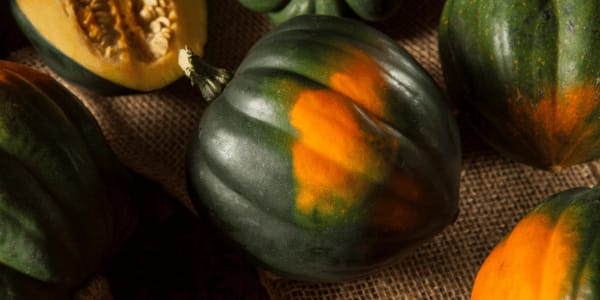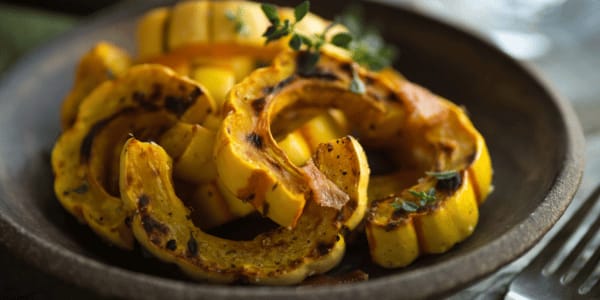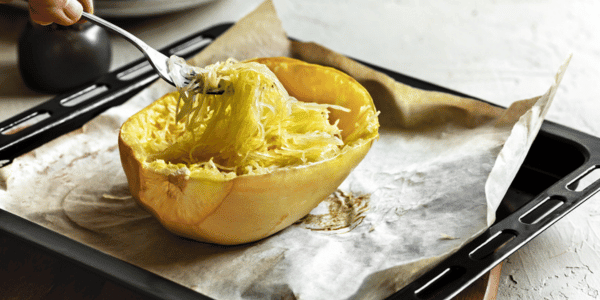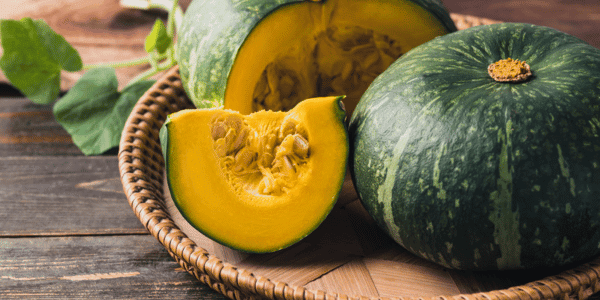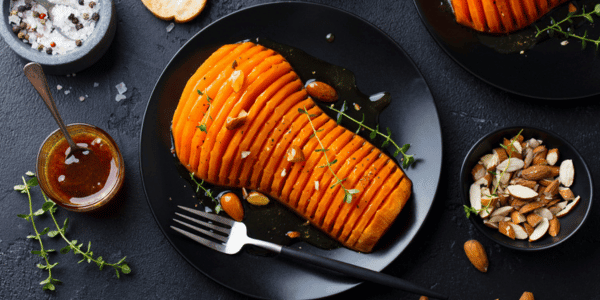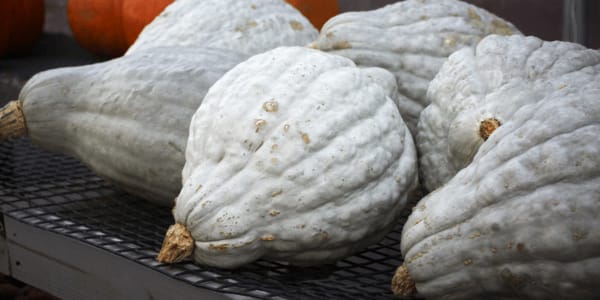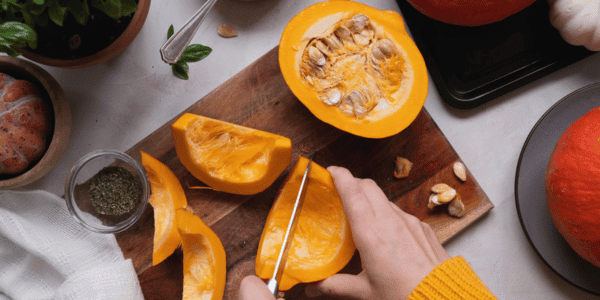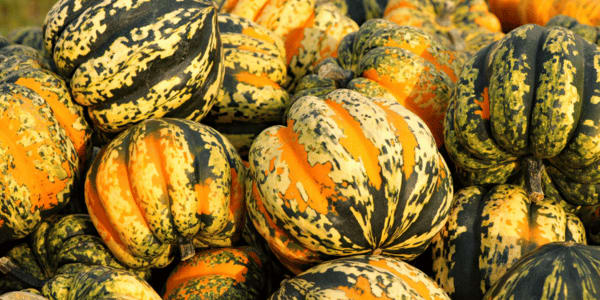9 Types of Squash & The Best Ways to Use Them
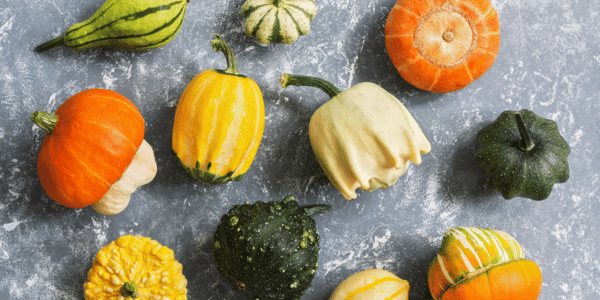
One of the treasures of fall is an abundance of squash. Hearty, long-lasting, and packed with nutrients and flavor, each of the different types of squash can be the perfect addition to a bountiful table. From bursting-with-flavor fall soups to alternatives for pasta in a no-carb diet, it’s easy to find fun ways to use various squash types. Read on for the ultimate squash types list and get tips for how to use squash.
What is Squash?
Squash is a tough-skinned food from the gourd family. Though considered a vegetable in food prep, they’re botanically classified as fruits, grown from flowering plants. All squash stems from the Cucurbita genus, with two major groups: winter squash, which can remain shelf-stable for months, such as pumpkins, and summer squash, such as zucchini.
How Many Types of Squash Are There?
There are over 100 different types of squash. Squash comes in numerous colors with countless flavor profiles, and the time to maturity, species, skin type, and hardiness all vary significantly.
Best Types of Squash For Fall
These are the most nutrient-dense and flavorful squash types for fall:
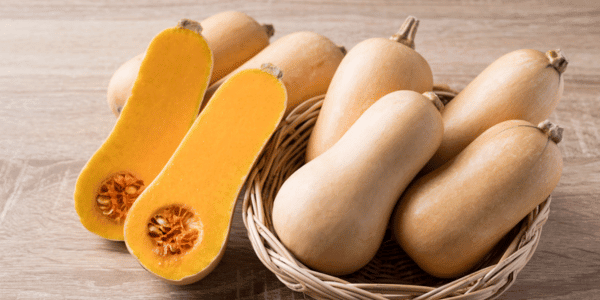
Butternut Squash
Beloved for its sweetness, butternut squash has firm, orange flesh with smooth beige skin. It’s easy to spot thanks to its long, straight neck and a bulging base seed cavity. Playing nicely with a whole blend of autumn seasonings, butternut squash is one of fall’s most recognized seasonal foods. It can be prepared in a variety of ways, including:
- Roasted
- Steamed
- Sauteed
- Creamed
Acorn Squash
Acorn squash earns its name from its super-sized acorn shape. It boasts dark, green skin and a bright yellow interior that has a stringy texture and mild flavor. It’s a long-lasting squash you can store in a cool, dry place for months.
Due to its hard flesh and ribbed exterior, it’s tough to peel. Instead, cut it in half, seed it, and let it roast in the oven for an extended period of time. When tender, pack it with a rice or stuffing mixture.
Delicata Squash
Delicata squash is a smaller squash type with a cylindrical shape. Its distinctive appearance includes a soft beige color with green stripes.
Unlike other winter squash types, the skin on the delicata is softer, which means it’s easier to break down and doesn’t need peeling. Once cut and seeded, roast it to bring out its natural sweetness. You can chunk it and sauté it with other veggies for a hearty, meatless main, too.
Spaghetti Squash
Spaghetti squash is a bright yellow melon-shaped gourd high in fiber, vitamins, and antioxidants. It has a stringy flesh that, after roasting, can be pulled apart to create spaghetti-like noodles (hence the name).
Spaghetti squash has a light, nutty, and slightly sweet taste. To prepare spaghetti squash:
- Slice it in half
- Remove the seeds
- Roast until tender
- Use a fork to scrape out the strands
- Top with your favorite sauce for a low-carb, pasta-esque treat.
Kabocha Squash
Many use this dark-green squash type for decoration, but when cooked correctly, it packs a flavorful punch. It’s a Japanese pumpkin with a dark orange, starchy, and gritty flesh that tastes a little nutty.
To enjoy this tasty food that’s full of nutrients, simply slice, dice, and sauté. Alternatively, you can steam it, blend it, and add it to a curry or soup.
Honeynut Squash
A hybrid of butternut and buttercup squash conceptualized by vegetable breeder Michael Mazourek at Cornell University, honeynut squash resembles a mini butternut squash with green-orange speckled skin. Although sweeter and nuttier than butternut squash, it can be used the same way.
Honeynut squash’s small size, edible skin, and quick cooking time make it an ideal substitute for recipes. It’s tender and creamy, great for a long-simmering soup with a touch of cinnamon to warm you through. Or roast it whole or halved and add it to a salad or serve it alongside chicken.
Hubbard Squash
Quite a different-looking type of winter squash, Hubbard squash has a blue/gray/green skin color and an oblong or teardrop shape. Coming in at one foot wide and weighing 15 to 20 pounds, these squashes are starchier and drier than others.
You’ll need to beware of the Hubbard squash’s tough shell. It can be difficult to work with, but once roasted, Hubbard squash caramelizes very nicely and is reminiscent of yams or sweet potatoes. You can puree it and use it as a substitute for canned pumpkin in pies, breads, and other desserts.
Sugar Pumpkin
Also known as a “pie pumpkin,” sugar pumpkins are a type of winter squash characterized by their thick, interior flesh and sweet pumpkin flavor. Because they’re denser than carving pumpkins, they have more “meat” to add to baked goods.
Despite their small size, sugar pumpkins require a considerable amount of time to dry out sufficiently to match the texture of canned pumpkin puree. However, their intense flavor and sweet smoothness make them a worthy alternative. Plus, it pairs well with other fruits, such as apple varieties.
Carnival Squash
Probably one of the most unique squash varieties, carnival squash is a version of acorn squash known for its vibrant skin. They may appear unripe with patches of green, orange, and beige, but they’re ready to pick and add to your dishes all fall long.
Carnival squash looks like a smaller, ridged pumpkin. Its flesh is sweeter than that of other acorn squash. This allows it to work in plenty of dishes, including soups. However, with proper fresh produce storage, you can also use these squashes in the middle of winter to create stuffed dishes.
Going Beyond Squash: Incredible Flavor All Winter Is Possible
Squash brings depth of flavor to a warm soup and that sweet something in a lunchtime salad. With so many types of squash available, most of which will last for months with proper storage, these are the hardy foods you want to keep on hand. For more gourd greatness, learn what types of pumpkins are best for your fall feasts.
Winter Squash FAQs
How to pick a good squash?
Look for a squash that has a dense feel and is free from any damage to the skin. Color is less important than a firm exterior. The skin should be dull and have no give when pressed.
Do you have to peel squash?
You don’t always have to peel squash. Some varieties are more challenging to chew, such as butternut, but others, including delicata and acorn, have a thin skin that makes them easy to break down.
How to store squash?
Storing squash in a cool, dry location out of the way of sunlight extends its life. Keep it unwashed. If you plan to use it within a day or so, you can keep it on the counter. There’s no need to refrigerate it, especially in a dry environment.
Is squash a fruit?
Squash is botanically a fruit because it grows on vines and has seeds. However, it’s often thought of as a vegetable in most kitchens.
Can dogs have squash?
Yes, most of the time, squash is safe for dogs to eat. It contains a high amount of vitamins A, C, and E, and is a good source of fiber.
